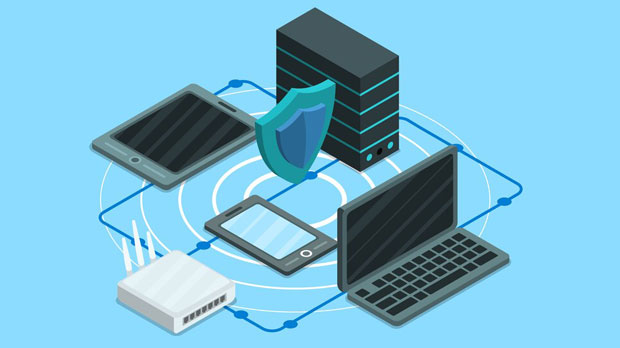In the realm of static residential proxies, maintaining high IP authenticity is crucial for ensuring successful web scraping, secure browsing, and anonymity. Among the top players in the proxy market, PYPROXY and Proxyscrape have garnered attention for their offerings of residential IPs. This article aims to compare the IP authenticity of these two providers, analyzing how they differ in terms of IP quality, rotation methods, and the reliability of their proxies. Understanding these factors is important for businesses and individuals looking to make an informed decision when selecting a residential proxy provider for their needs. What are static residential proxies?Before diving into the comparison, it’s essential to understand what static residential proxies are and why IP authenticity matters. Static residential proxies are IP addresses that are assigned to real residential devices, making them appear as regular users browsing the web. These proxies provide a more legitimate and trustworthy presence compared to datacenter proxies, which are easily detectable and often blocked by websites.For various online activities such as data scraping, social media automation, and anonymous browsing, IP authenticity is vital. Websites can easily detect non-residential IP addresses, leading to blocks or captchas. High-quality residential proxies like those provided by PyProxy and Proxyscrape can circumvent such issues by offering IPs that appear to be genuine users.Overview of PyProxyPyProxy is a proxy provider known for offering static residential IPs, which are sourced from a wide array of real residential networks. These proxies allow users to maintain high anonymity and bypass geographic restrictions, often crucial for businesses and individuals engaged in web scraping or other data-driven activities.The key feature that differentiates PyProxy from many competitors is its IP rotation mechanism. With PyProxy, users can rotate IP addresses to prevent detection while maintaining a static IP in the same region. This flexibility ensures high levels of security while optimizing performance for long-duration tasks.Overview of ProxyscrapeProxyscrape, on the other hand, is a popular provider known for its large proxy pool. It offers both static residential proxies and rotating proxy services, allowing users to choose between long-lasting static IPs or more dynamic IP pools that change frequently. Proxyscrape’s network of residential proxies is vast, providing a wide range of geographic locations for users to choose from.What sets Proxyscrape apart is the sheer volume of proxies it offers, which is beneficial for large-scale operations. However, the primary focus is often on proxy rotation, which is more suited for tasks that require numerous requests from different IPs to avoid rate limiting or detection.IP Authenticity: PyProxy vs. ProxyscrapeWhen comparing the IP authenticity of PyProxy and Proxyscrape, there are several key factors to consider: IP sourcing, proxy rotation, geographic targeting, and overall quality.IP Sourcing and QualityBoth PyProxy and Proxyscrape focus on sourcing their residential IPs from real users, making them less likely to be flagged as proxies. PyProxy prides itself on using only high-quality residential IPs, with an emphasis on maintaining their integrity and authenticity. The company uses advanced mechanisms to ensure that its IPs are not easily flagged, providing clients with a strong sense of reliability.Proxyscrape, with its vast network of proxies, also maintains a strong focus on IP authenticity. However, due to the large number of proxies it manages, there may be some fluctuation in quality. Some proxies may have a higher risk of being flagged if they have been used too frequently, which could potentially compromise the authenticity in certain cases.Proxy RotationBoth providers offer flexible IP rotation options, but there are key differences in how they approach it. PyProxy allows for controlled rotation, where users can choose to maintain a static IP for longer periods or switch between IPs within the same region. This provides a balance between IP authenticity and the need for rotating IPs for certain tasks.Proxyscrape, on the other hand, primarily offers dynamic IP rotation. While this ensures that users can avoid detection by constantly changing IPs, it may affect the perceived authenticity of the IPs over extended usage periods. The rapid rotation might raise flags with some websites, as they might detect unusual patterns in IP changes.Geographic Targeting and PerformanceBoth providers offer diverse geographic targeting, but there are differences in how they cater to specific regions. PyProxy’s static residential IPs are spread across multiple locations, which is ideal for users needing consistent access to a specific region. This allows for enhanced reliability in tasks that require long-term data scraping from a single location.Proxyscrape, however, offers a more extensive global reach, thanks to its larger proxy pool. While it may offer broader geographic options, users may sometimes experience inconsistent performance depending on the region. In some cases, proxies from less-popular locations may be overused, leading to potential issues with IP authenticity.Reliability and StabilityIn terms of reliability, PyProxy is often regarded as more stable due to its focus on high-quality, less-frequented residential IPs. This translates into fewer issues with blocks or captchas, making it a more dependable choice for users who require consistent performance.Proxyscrape’s strength lies in its large volume of IPs, allowing for more frequent rotation. However, due to this extensive pool, the reliability of the IPs can vary. Users might experience temporary drops in quality or performance, especially if the IPs they are assigned have been previously flagged.Which Provider is Better for IP Authenticity?Ultimately, both PyProxy and Proxyscrape have their strengths and weaknesses when it comes to IP authenticity in static residential proxies. PyProxy stands out for its consistent IP quality, controlled rotation, and stability, making it the better choice for users who prioritize long-term, uninterrupted access with high levels of authenticity.On the other hand, Proxyscrape’s larger pool of proxies and dynamic IP rotation offers greater flexibility for tasks requiring multiple IPs, but it may come with a higher risk of detection due to the more frequent changes in IPs. Therefore, for short-term tasks requiring a broad range of IPs, Proxyscrape might be more suited to your needs.In conclusion, the choice between PyProxy and Proxyscrape depends on your specific needs. If you value authenticity and stability, PyProxy is the better option. However, if you require large-scale proxy usage with the ability to rotate IPs frequently, Proxyscrape could be a more fitting solution.
Sep 12, 2025


































































